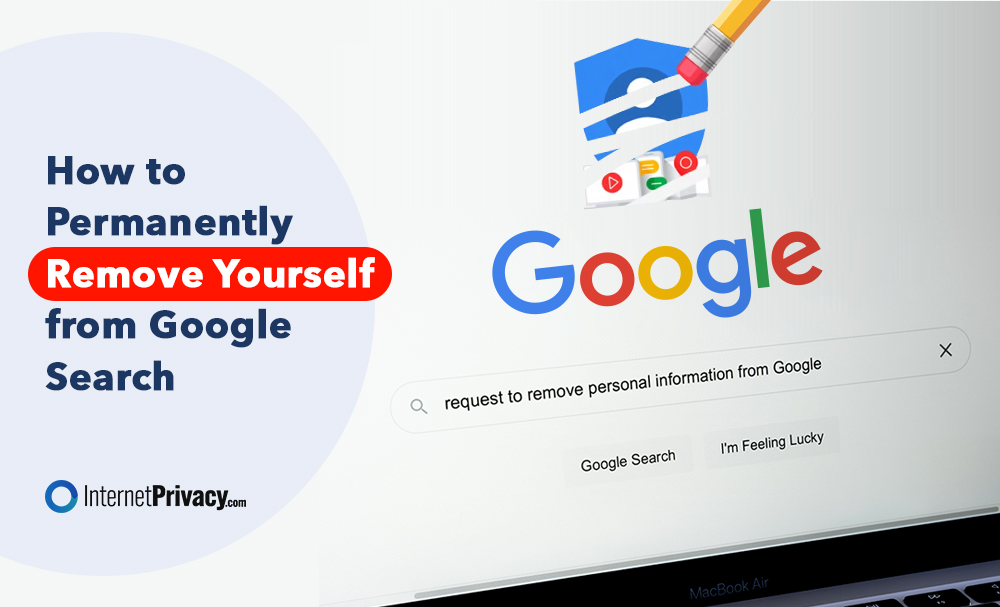How to Permanently Remove Yourself from Google Search

Removing yourself from Google search results may seem daunting, but it is possible to regain control over your online presence. Whether you’re concerned about privacy, managing to remove your personal or professional image, or want to maintain a low online profile, removing yourself from Google search results can help achieve these goals. Complete removal is not always feasible due to certain limitations.
In this article, we will explore why you might want to remove yourself from Google searches and discuss the steps involved in permanently removing your information from Google’s search results here. We will also explore alternative strategies for managing your online presence effectively. Let’s dive in and reclaim your online privacy.
Why Would You Want to Remove Yourself from Google Search?
You might want to remove yourself from Google Search for several reasons.
1. Privacy: Many people value privacy and don’t want personal information easily accessible online. Removing yourself from Google Search can protect your privacy and limit the exposure of personal details.
2. Reputation management: Negative or outdated information associated with your name in Google Search results can affect your personal or professional reputation. By removing yourself from search results, you can have more control over how you’re perceived online.
3. Safety concerns: Some individuals have valid safety concerns that lead them to remove their information from Google Search. This includes victims of harassment or those at risk due to their occupation or personal circumstances.
4. Legal reasons: There may be situations where it’s necessary to not remove information about yourself from Google Search, such as wrongful disclosure of personal information or dealing with identity theft or fraud.
5. Moving on from the past: Sometimes, people want to move on from their past and start fresh. Removing yourself from Google Search can help distance yourself from previous associations or incidents and allow you to create a new online identity.
It’s important to note that while you can partially remove yourself from Google Search, complete removal may not always be feasible due to the nature of the internet and search engine operations.
Is It Possible to Completely Remove Yourself from Google Search?
It is not possible to completely remove yourself from Google searches. Google, which accounted for over 92% of the global search engine market share as of January 2021, is a search engine that indexes and organizes internet information.
Google’s algorithms retrieve and display relevant results when someone searches for your name or relevant information. Minimizing your online presence is challenging because deleting or requesting content removal does not completely erase your digital footprint. Even if you remove some personal information from Google, cached versions or indexed sources may still exist. Websites and platforms may have their content removal policies that vary.
What Are the Limitations of Removing Yourself from Google Search?
When removing yourself from Google Search, being aware of the limitations is important. You can decrease your online visibility but not completely remove yourself from Google Search results.
Here are the limitations of removing yourself from Google Search:
1. Third-party websites: Even if you remove content from your website or social media profiles, it may still exist on other websites. Google Search indexes information from various websites; unless the content is removed, it may still appear in search results.
2. Cached versions: Google’s search index may retain cached versions of web page images even after the original content has been removed or deleted. These cached versions can still show up in search results, especially if the removal process is recent.
3. Legal and public interest content: Certain types of content may be protected by law or fall under the public interest category. This includes news articles, public records, and legal documents. Removing such content may not be possible or advisable due to legal or ethical reasons.
4. Time for removal: The removal process takes time. After submitting requests to remove content, it may take time for Google to process and implement those removal requests. During this period, the content may still appear in search results.
Steps to Permanently Remove Yourself from Google Search
Looking to vanish from the all-seeing eye of Google? Here’s your guide to permanently removing yourself from Google Search. We’ll walk you through the step-by-step process of disappearing from the digital sphere. First, we’ll tackle deleting personal information scattered across websites. Then, we’ll dive into opting out of data collection by other search engines. Next, we’ll discuss requesting content removal from websites. We won’t stop there—buckle up as we show you how to utilize the powerful Google Removal Tool. We’ll uncover the secrets of requesting URL removal from Google Search. Get ready to regain your digital privacy!
Step 1: Delete Personal Information from Websites
To remove your info from Google searches, delete personal information from websites. Follow these steps:
1. Identify websites containing your personal information, such as social media platforms or directories.
2. Contact the website owner or administrator and request the removal of your personal information.
3. Review privacy policies to understand how your information is used and personally identifiable information is shared.
4. Use online tools or services to identify and remove personal information from multiple websites.
5. Regularly monitor and update to ensure your personal information is not displayed.
By following these steps, you can take control of your online privacy and delete personal information from websites. Remember to review privacy policies and monitor your online presence.
Note: While you can request the removal of your personal information from websites, it may not be completely erased from search engine results.
Step 2: Opt-Out of Data Collection by Search Engines
Opting out of data collection by search engines is crucial in removing yourself from Google search. To do this, follow these steps:
Step 1: Review privacy settings: Go to the search engine settings and carefully review the available privacy options. Make sure to opt out of any data collection practices.
Step 2: Disable personalized search: Personalized search gathers data based on browsing history and preferences. To opt out of this, navigate to the search engine settings and disable personalized search. Doing this prevents search results from being tailored to your specific interests.
Step 3: Clear cookies and cache: It is essential to regularly clear cookies and cache by adjusting the settings on your browser. This simple action helps prevent unnecessary data collection.
Step 4: Use private browsing mode: Whenever you search, use private browsing or incognito mode. This special mode does not save your browsing history, cookies, or search data, providing users with additional privacy.
Step 5: Install a VPN: Consider installing a VPN (Virtual Private Network) to encrypt your internet connection and mask your IP address. A VPN enhances online security and minimizes the amount of data collected.
By following these steps, you can effectively opt out of data collection by search engines and remove yourself from Google searches. Remember to regularly review and update your privacy settings to maintain control over your personal information.
Step 3: Request Content Removal from Websites
To request content removal from websites, follow these steps:
Step 1: Identify websites with the content you want to remove.
Step 2: Visit each website and find their contact information or content removal page.
Step 3: Compose a polite email or message requesting the content of the web page’s removal. Please explain why you want it taken down.
Step 4: Include relevant laws or regulations supporting your request, such as privacy rights or copyright infringement.
Step 5: Attach any evidence or documentation proving your ownership or rights to the content.
Step 6: Send the request to the website’s designated contact or content removal team.
Step 7: Follow up if you don’t receive a response within a reasonable timeframe.
Step 8: Document your communication dates and details with each website.
Step 9: If the website refuses to remove your personal information or doesn’t respond, consult a legal professional for further options.
Following these steps, you can effectively request content removal from websites and protect your online presence.
Step 4: Use the Google Removal Tool
To permanently remove yourself from Google Search, follow these steps:
- Access the Google Removal Tool.
- Click on “New Removal Request.”
- Enter the URL of the webpage you want to remove.
- Select the reason for removal, such as outdated content or personal information.
- Provide any additional information or documentation to support your request.
- Submit the removal request and wait for Google to review and process it.
Note that using the Google Removal Tool does not guarantee immediate removal from search results. Google will evaluate the request based on its policies and guidelines. In some cases, the tool may be unable to remove certain types of content, such as legal or government-related information or content already protected by law.
It is advised to regularly check the relevant search terms and results to ensure the requested content has been removed. If the content still appears after a reasonable period, considering other alternatives, such as managing your online presence or promoting positive content, may be necessary to push the unwanted information further down in search results.
Remember to provide accurate and specific information when using the Google Removal Tool to increase the chances of successful removal.
Step 5: Request URL Removal from Google Search
To request URL removal from Google Search, follow these steps:
1. Go to the Google Search Console website.
2. Select the property containing the URL you want to remove.
3. Click on “Removals” in the left sidebar.
4. Click on “New Request.”
5. Enter the URL you want to remove.
6. Choose whether to temporarily hide the URL in search results or completely remove it from Google’s index.
7. Provide a reason for the request and any additional information.
8. Click on “Submit Request.”
By following Step 5, you can request the removal of a specific URL from Google Search. It is important to note that the request may take time to process and for the URL to be removed from search results. It’s worth mentioning that URL removal does not guarantee permanent erasure from the internet, as it may still exist on other websites or be accessed through other means.
In addition to requesting URL removal, alternative approaches to managing your online presence and protecting your privacy exist. It is recommended to regularly review your online accounts and privacy settings, promote positive content that reflects your desired image, and utilize privacy settings provided by various platforms and search engines. These proactive steps can help you control your online presence and protect your personal information. Stay informed about the latest updates and changes in privacy policies to make informed decisions.
What Are the Alternatives to Removing Yourself from Google Search?
Looking for alternatives on how to remove yourself from a Google search? We’ve got you covered. Discover how managing your online presence, promoting positive content, and utilizing privacy settings can help you regain control over your digital footprint. Leave behind the stress of being searchable and take charge of your online reputation. Let’s get started!
1. Manage Your Online Presence
Managing your online presence is crucial. It is important to take control of your online identity by following these strategies:
1. Regularly monitor your online presence by searching for your full name on popular search engines like Google.
2. Use Google Alerts to receive notifications about your name or relevant keywords being mentioned online.
3. Establish and maintain an active presence on various social media platforms to showcase your expertise and engage with your audience.
4. Update your professional profiles on websites like LinkedIn to reflect your skills, qualifications, and achievements.
5. Remove any compromising or unprofessional content from your social media accounts and websites, including inappropriate photos, comments, or posts.
6. Safeguard your personal information by adjusting privacy settings on social media and other online accounts.
7. Create a personal website or blog to share your professional accomplishments, thoughts, and experiences.
8. Engage with others in your industry by participating in online forums, joining professional groups, and commenting on relevant articles or blog posts.
9. Review and assess search results for your name and home address. If you encounter negative or inaccurate information, take proactive steps to address and mitigate it.
10. Continuously work on personal branding efforts to shape the narrative surrounding your online presence and align it with your professional goals.
By actively managing your online presence, you can maintain a positive and professional image that accurately represents you.
2. Promote Positive Content
To improve your online presence, follow these steps:
1. Create and Maintain a Professional Website: Control the content in search results by having your company or website. Include a bio, resume, portfolio, and other relevant information showcasing your skills and accomplishments.
2. Utilize Social Media: Create profiles on LinkedIn, Twitter, and Facebook platforms. Share content reflecting your expertise and interests. Engage with others in your industry by commenting, sharing, and participating in relevant discussions.
3. Contribute to Reputable Websites and Publications: Write articles or blog posts for respected websites or industry publications. This establishes you as a thought leader and lets you share your expertise with a wider audience.
4. Encourage Online Reviews and Testimonials: Ask satisfied clients or customers to leave positive reviews and testimonials about your work. Share these on your website, social media profiles, or relevant review platforms.
5. Engage with Online Communities: Join forums, groups, or communities related to your field. Provide helpful advice, share insights, and participate in discussions to demonstrate your expertise and build a positive reputation.
6. Optimize for Search Engines: Improve your website and online content visibility in search results through search engine optimization (SEO). Use relevant keywords, meta tags, and headings.
Promoting positive content is an ongoing process. Keep your website and social media profiles updated with fresh content. Engage with your audience by responding to comments and inquiries promptly. Actively manage your online presence to enhance your professional reputation and ensure positive content dominates search results.
3. Utilize Privacy Settings
To ensure the utmost confidentiality, it is essential to carefully review and understand the privacy settings on all social media accounts, email services, and other online platforms. Adjusting these settings guarantees that your personal information is only visible to individuals you trust.
Being mindful of the permissions granted to various apps on your devices is crucial. Consider whether providing access to your contacts, location, or other personal information is necessary and safe. If not, promptly revoke these permissions.
For an added layer of security, always enable two-factor authentication whenever it is available for your online accounts. This extra step usually involves verifying your identity with a code sent to your phone number and entering a password.
Keep your devices, such as smartphones, tablets, and computers, always secure. Set strong passwords or patterns, utilize biometric authentication features, and regularly update your software and apps to ensure you have the latest security patches.
When utilizing public Wi-Fi networks, exercise caution to protect your personal information. It is advisable to refrain from accessing sensitive accounts or sharing any personal details while connected to a public network, such as those found in coffee shops or airports.
Periodically review your online presence thoroughly by searching your name on various search engines. This will help you identify any outdated or inaccurate information associated with you. If necessary, contact the website owners to request the removal or correction of such information.





